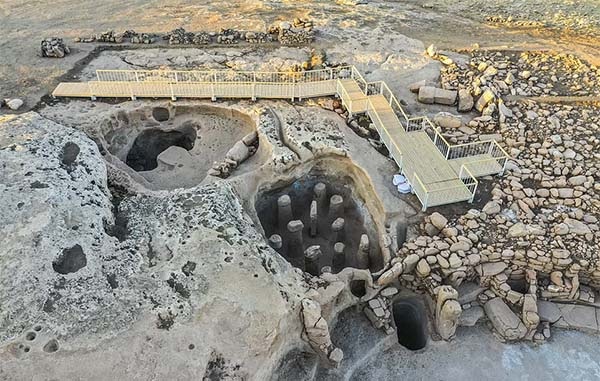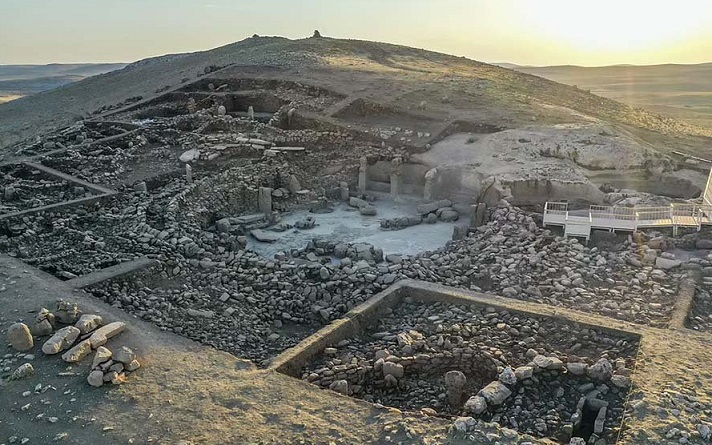Megaliths of 11 thousand years old were found in Turkey

Stunning depictions of human figures and heads have been found in what is considered one of the most important settlements of the Neolithic period. The discovery in Karahantepe, in the southeastern province of Sanliurfa (Turkey), reveals the artistic ability of the people who lived here 11,000 years ago.
At the moment, more than 250 T-shaped megaliths with images of animals have been found, as well as several three-dimensional human sculptures.
Excavations at the site first began in 2019 and, among other things, led to the discovery of a 23-meter-diameter building, most of which was carved into the rock and reached a depth of 5.5 meters.
The head of the excavation, Professor Nekmi Karul, said that the artifacts found are very similar to those found at the ancient site of Gebekli Tepe, which was built by prehistoric people 6,000 years before Stonehenge. According to him, there are many three-dimensional sculptures and human images, including human heads, among them.

As the scientists note, the results of their research clearly demonstrate that the artistic abilities of mankind during the Neolithic period were developed to a fairly high degree.
New images taken with a drone flying over the site show some of the sculptures that were found during excavations at Karahantepe. Some of the finds have already become exhibits of an exhibition that has opened at the Sanliurfa Archaeological Museum.
Karahantepe is located in a region called “Tash Tepeler”, which means “Stone Hills”, which covers an area of 200 km. It neighbors the UNESCO World Heritage Site of Gebekli Tepe, home to megalithic structures from the 10th millennium BC and considered the oldest temple in the world.
It is unclear how the sculptures were made, but, as in Göbekli Tepe, experts believe that hunter-gatherers are responsible for this. So in Gebekli Tepe, where excavations began 25 years ago, stone pillars weighing up to 10 tons were discovered. Carved from layers of natural limestone in the rock of the hill, they depicted stylized human figures with folded arms and genuine leather belts. Foxes, leopards, snakes and vultures were also carved. Something similar has now been found in Karahantepe.
According to scientists, finding out the reasons and construction technology in Gebekli Tepe will help to learn more about Karahantepe. Archaeologists believe that hunter-gatherers may have gathered 11,500 years ago to carve T-pillars with stone tools before dragging them across the top of the hill using rope, log beams and labor. One theory was that small groups living nearby joined forces to construct this type of building, perhaps in the form of a ritual, before hosting a large feast and then disperse again.



 Creators of mankind
Creators of mankind Description of “Tall white aliens”
Description of “Tall white aliens” Where they came from?
Where they came from? About hostile civilizations
About hostile civilizations The war for the Earth
The war for the Earth “Tall white aliens” about eternal life
“Tall white aliens” about eternal life Video: “Nordic aliens”
Video: “Nordic aliens” Aliens
Aliens Alien encounters
Alien encounters The aliens base
The aliens base UFO
UFO Technology UFO
Technology UFO Underground civilization
Underground civilization Ancient alien artifacts
Ancient alien artifacts Military and UFO
Military and UFO Mysteries and hypotheses
Mysteries and hypotheses Scientific facts
Scientific facts


















